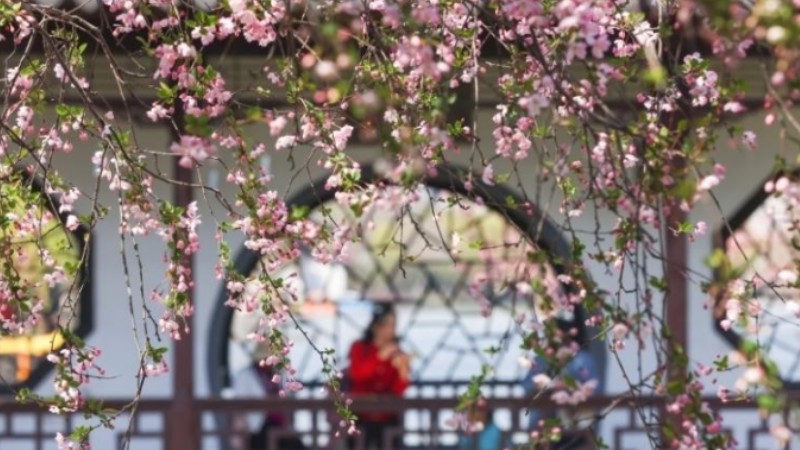Hong Kong businessman helps rural women fashion prosperous lives

Zhang Caicai works in a factory in Yinchuan, capital of northwest China's Ningxia Hui Autonomous Region, on March 3, 2023. (Xinhua/Ai Fumei)
YINCHUAN, March 19 (Xinhua) -- Amid the humming production lines and whirring sewing machines, dozens of women workers are busy stitching together clothes in a factory, making lingerie products while realizing their dream of building a better life.
Years ago, many of them were still housewives in the rural areas of northwest China's Ningxia Hui Autonomous Region. At that time, earning a decent salary while being able to care for their families seemed an impossibility.
However, since the arrival of a factory near their community four years ago, things have changed dramatically.
In 2019, Benny So, from Hong Kong, decided to move part of the production line of his Macao-based company from south China's Guangdong Province to Xinrong Village in Helan County of Ningxia.
Setting up the factory in Ningxia, a key stop along the Belt and Road, meant that the products could reach the European market faster via China-Europe freight trains. Compared with sea shipping, the China-Europe freight trains can deliver their high-end lingerie products to Europe within half the time.
"For time-sensitive fashion products, transportation efficiency is vital," said So, 63.
So still remembers that on his first visit to the village, local officials said the factory would be a poverty alleviation project providing jobs for the residents relocated from Xihaigu, a region once deemed "uninhabitable."
"I think it would be nice to bring more income to the impoverished residents," he said, adding that workers in the factory earn an average of 5,000 yuan (about 724 U.S. dollars) to 6,000 yuan per month.
Zhang Caicai, one of the first workers in the factory, said she used to pick up odd jobs that were tiring and poorly paid.
"With this job near home, I can support my family and take care of them, without having to ask my husband for money," she said.
Xinrong Village was removed from the poverty list in the same year as the factory was established.
Now, the company's factory in Ningxia has seen the value of its annual output grow to 6 million yuan, employing over 70 workers, mostly women. According to So, the problem for the factory is never orders but a shortage of workers.
Despite the impact of the pandemic, the company continued to see its business orders surge, while staffing shortages remained an issue. So attributes the shortage of workers to the emergence of a wider array of employment opportunities in recent years, a development he views as positive.
To meet production needs, he is now actively recruiting and aims to hire a total of 200 people by the end of this year.
Despite the challenges, So remains confident about the future. "With China's Belt and Road Initiative, and the improved transport made possible by the China-Europe freight trains, I'm optimistic about the company's prospects in Ningxia," he said.
Photos
Related Stories
- China's major clothing firms post steady profit growth
- Culture Fact: Horse-face skirt
- An invitation of snow from a snowboard girl
- Chinese style on the world stage: Han-style clothing encounters foreign culture at a renaissance festival
- Small town transforms itself into largest children’s wear manufacturing center
- Hat industry upgraded in Ligezhuang Town
Copyright © 2023 People's Daily Online. All Rights Reserved.









